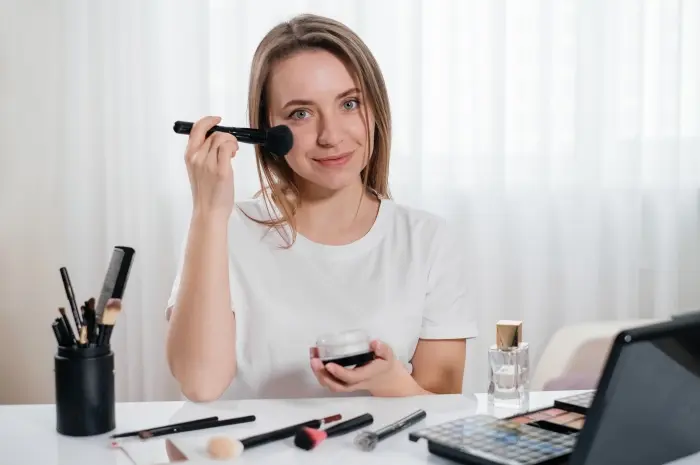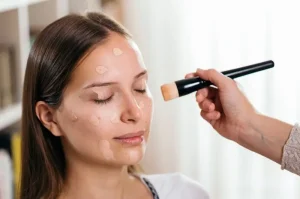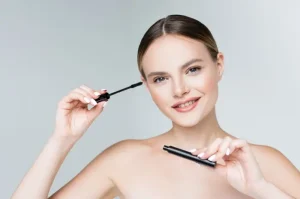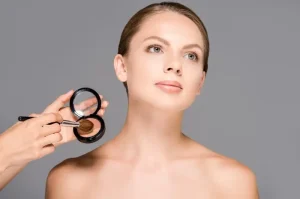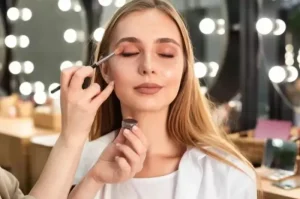Seasonal allergies can be a real nuisance, causing symptoms like redness, puffiness, and dark circles that can make you look tired and worn out.
While there’s no magic cure for allergies, you don’t have to let them ruin your look.
With the right makeup techniques, you can effectively conceal allergy symptoms and present a fresh, radiant appearance.
Knowing how to skillfully apply makeup to mask these symptoms can boost your confidence and help you face the day looking your best.
Whether you’re dealing with watery eyes, irritated skin, or a stuffy nose, there are makeup hacks that can help you look vibrant and allergy-free.
From choosing the right products to mastering specific application techniques, here are seven essential hacks to conceal allergy symptoms with makeup, ensuring you look and feel great even during allergy season.
1. Start with a Hydrating Primer
Hydration is Key
Allergies can leave your skin dry and flaky, making it essential to start with a hydrating primer.
A good primer will create a smooth base for your makeup, ensuring it adheres well and lasts longer.
Look for primers with ingredients like hyaluronic acid and glycerin to keep your skin moisturized and plump.
Application Tip
Apply a thin layer of primer all over your face, focusing on areas where you experience dryness or flakiness.
Allow it to set for a few minutes before applying your foundation.
2. Use a Green-Tinted Corrector
Neutralize Redness
Redness is a common symptom of allergies, especially around the nose and eyes. A green-tinted corrector can neutralize this redness, creating a more even skin tone.
Green cancels out red, making it an essential tool for concealing allergy symptoms with makeup.
Application Tip
Dab a small amount of green corrector on the red areas and blend gently with your fingertips or a makeup sponge. Follow with your regular foundation or concealer.
3. Opt for a Yellow-Toned Concealer
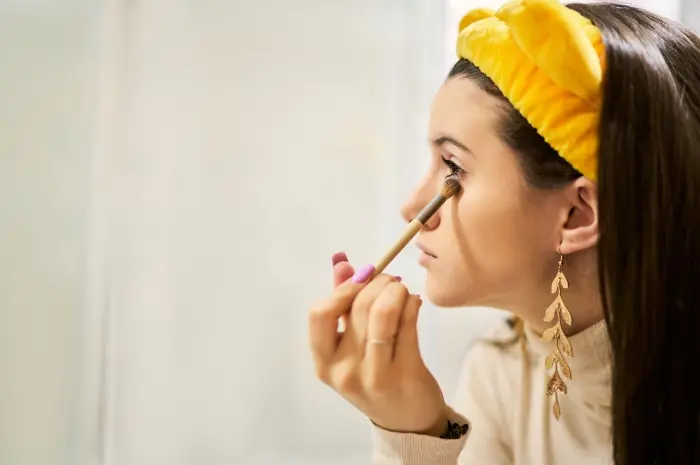
Brighten Dark Circles
Dark circles under the eyes are another common issue for allergy sufferers.
A yellow-toned concealer can counteract the blue and purple tones of dark circles, giving you a brighter and more awake appearance.
Application Tip
Apply the yellow-toned concealer in an inverted triangle shape under your eyes and blend it out with a damp makeup sponge.
This technique provides better coverage and creates a lifting effect.
4. Use a Cold Spoon for Puffiness
Reduce Swelling
Puffiness around the eyes can make you look tired and swollen. One quick hack is to use a cold spoon to reduce this swelling.
The cold temperature constricts blood vessels, reducing puffiness and making your eyes appear more open and refreshed.
Application Tip
Place two spoons in the freezer for a few minutes, then gently press them against your under-eye area for a few seconds.
Follow up with your usual eye cream and makeup routine.
5. Choose Waterproof Mascara
Prevent Smudging
Watery eyes can cause your mascara to smudge and run, exacerbating the look of allergy symptoms.
Opt for a waterproof mascara that will stay put even if your eyes water throughout the day.
Application Tip
Curl your lashes and apply a thin coat of waterproof mascara, starting from the base and wiggling the wand upwards. This will help separate the lashes and prevent clumping.
6. Highlight Strategically
Brighten Your Complexion
Using a highlighter strategically can help divert attention away from any allergy-related imperfections.
Highlighter adds a touch of glow and can make your skin look more radiant and healthy.
Application Tip
Apply highlighter to the high points of your face, such as the tops of your cheekbones, the bridge of your nose, and your cupid’s bow.
Avoid highlighting areas that are puffy or red, as this can draw unwanted attention to those areas.
7. Set Your Makeup
Long-Lasting Finish
To ensure your makeup stays in place and continues to conceal allergy symptoms, it’s essential to set it with a good setting powder or spray.
This will lock in your makeup and prevent it from melting or moving throughout the day.
Application Tip
Lightly dust a translucent setting powder over your face with a fluffy brush, focusing on areas that tend to get oily.
Alternatively, use a setting spray for a more natural, dewy finish.
Conclusion
Concealing allergy symptoms with makeup doesn’t have to be a daunting task.
By incorporating these seven hacks into your makeup routine, you can effectively mask redness, puffiness, and dark circles, ensuring you look fresh and vibrant even during allergy season.
Remember to start with a hydrated base, use the right color correctors, and set your makeup for a long-lasting finish.
With these tips, you’ll be able to face the day with confidence, no matter how your allergies are acting up.
